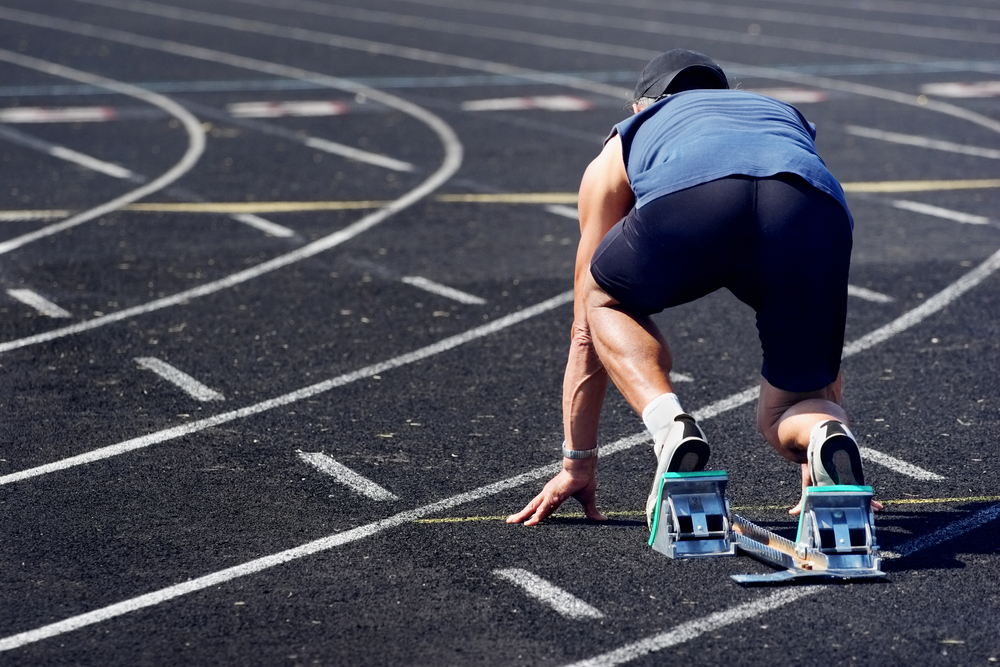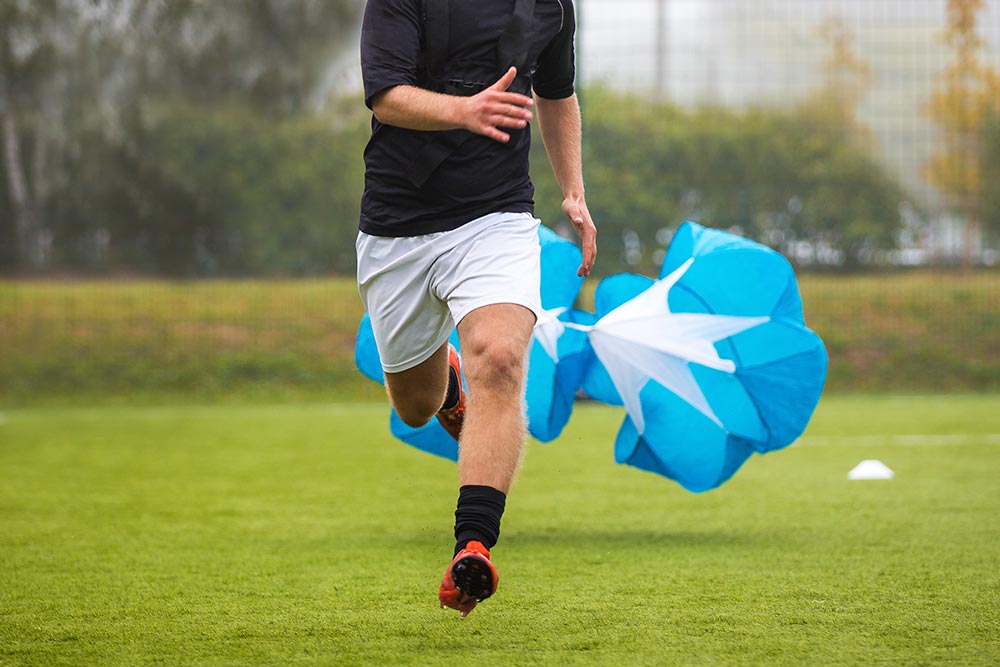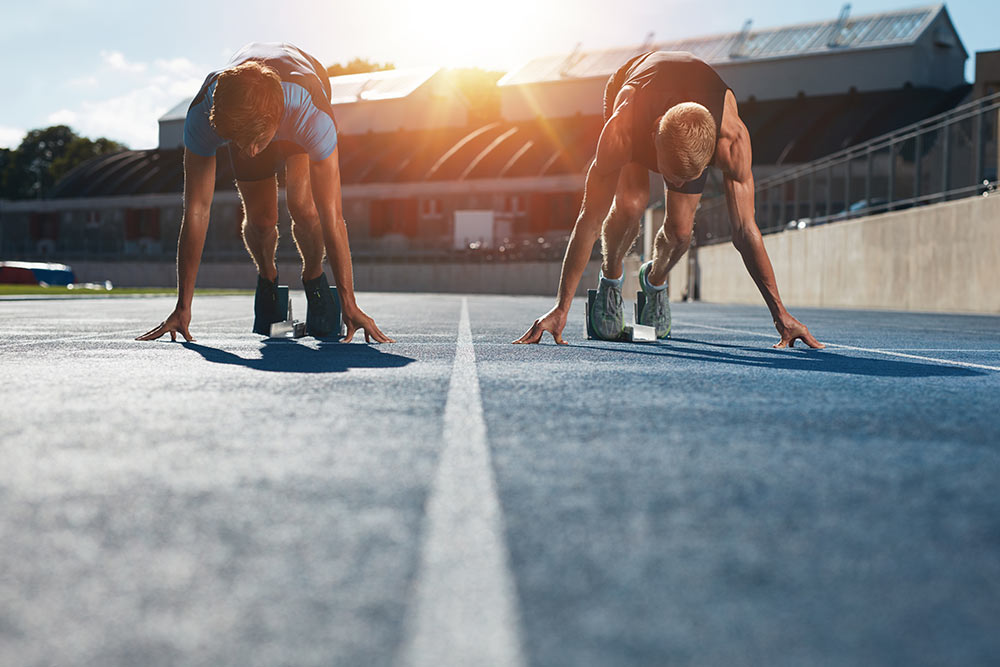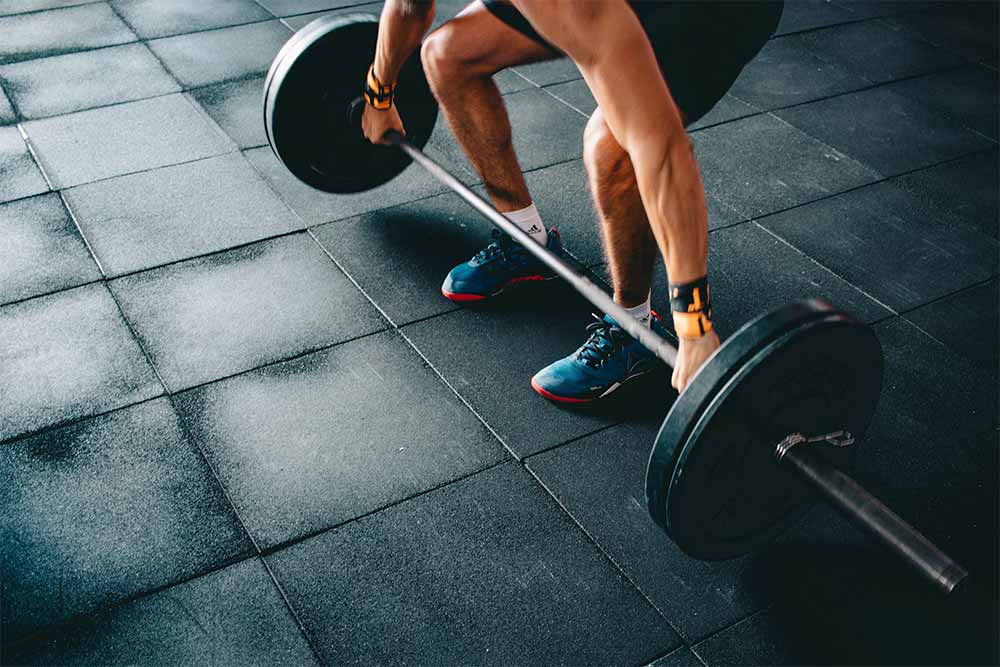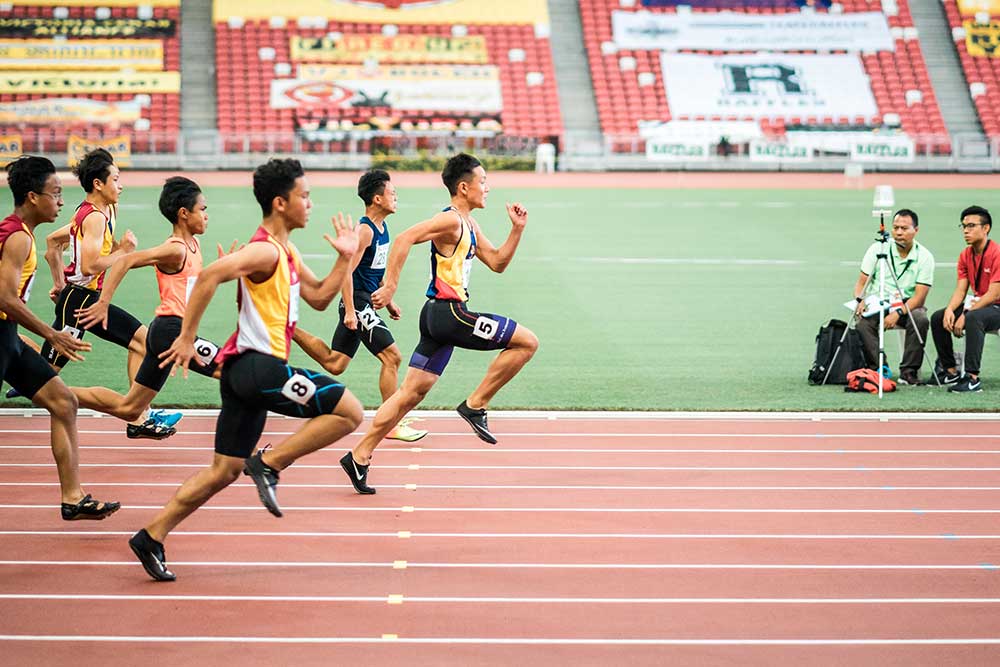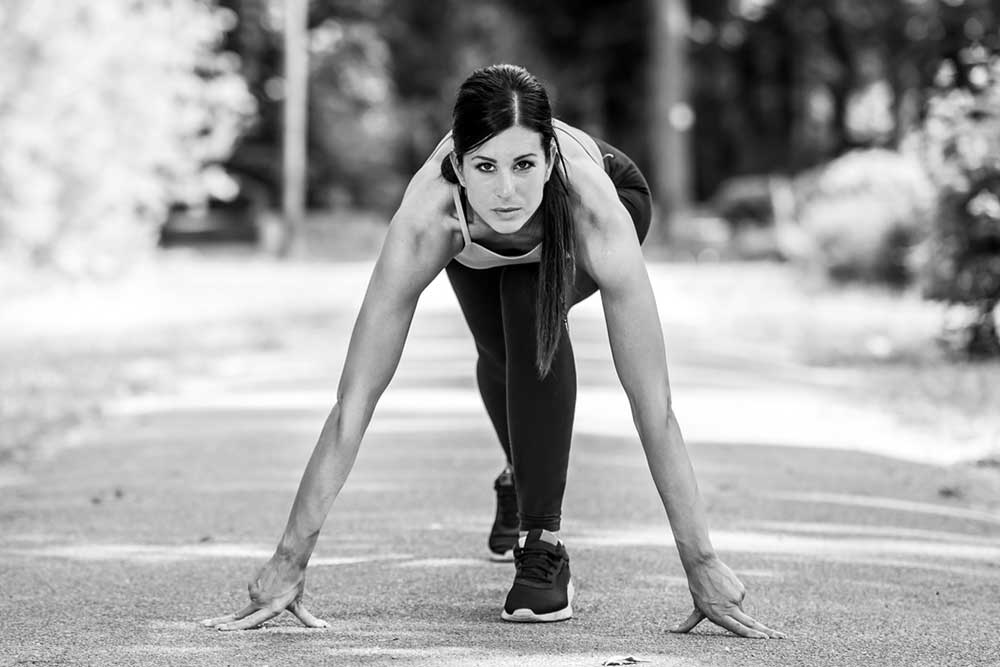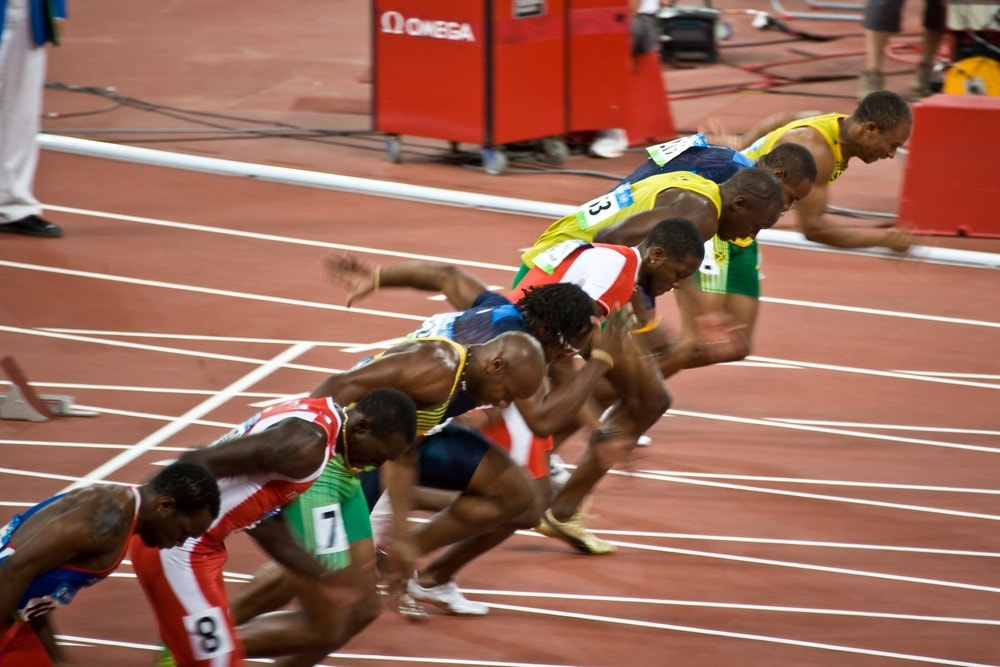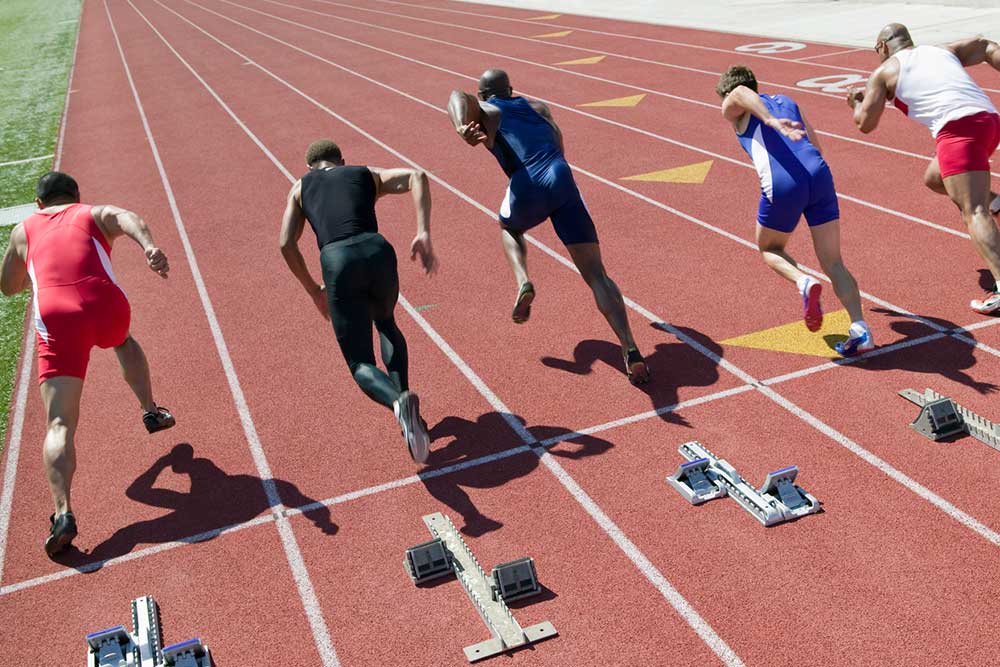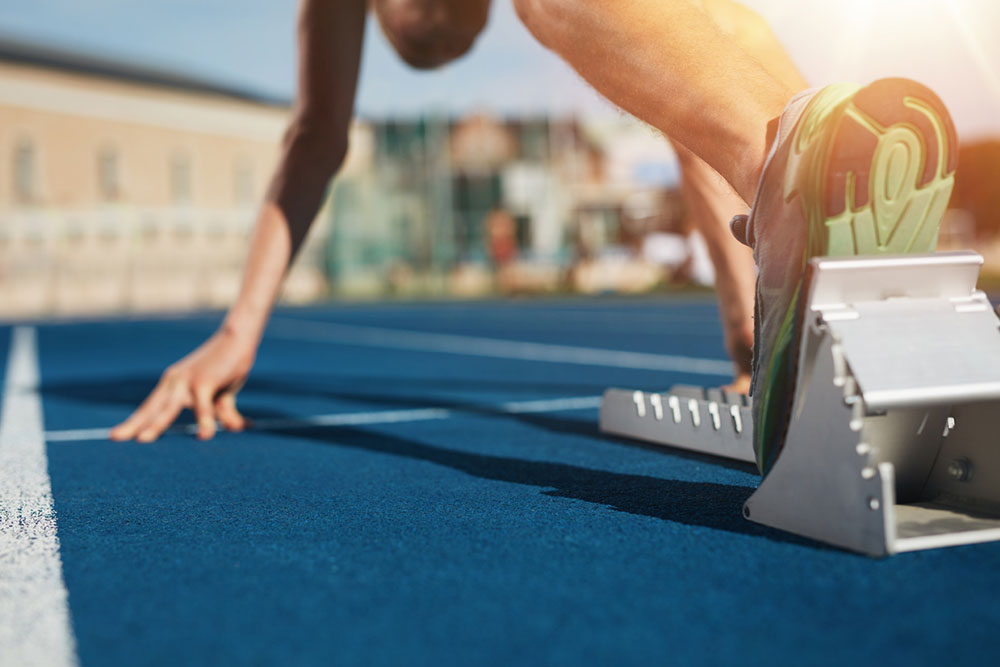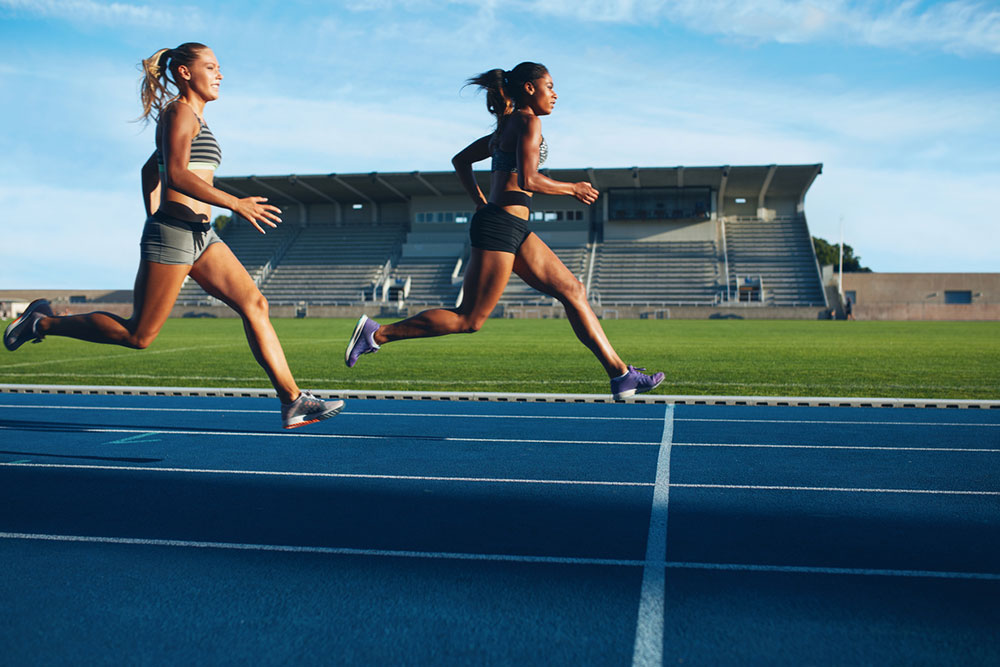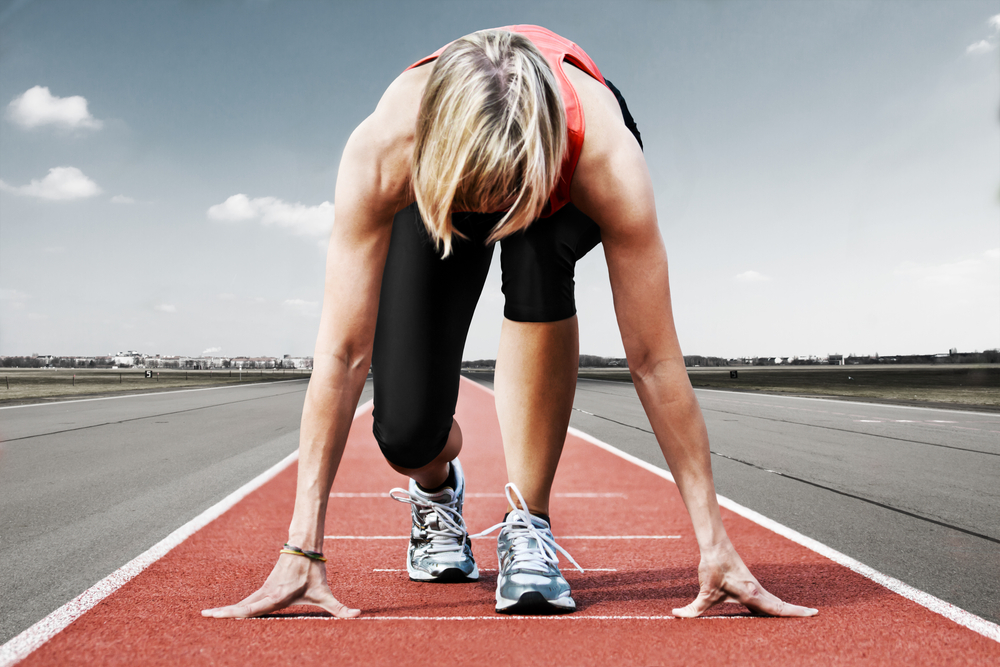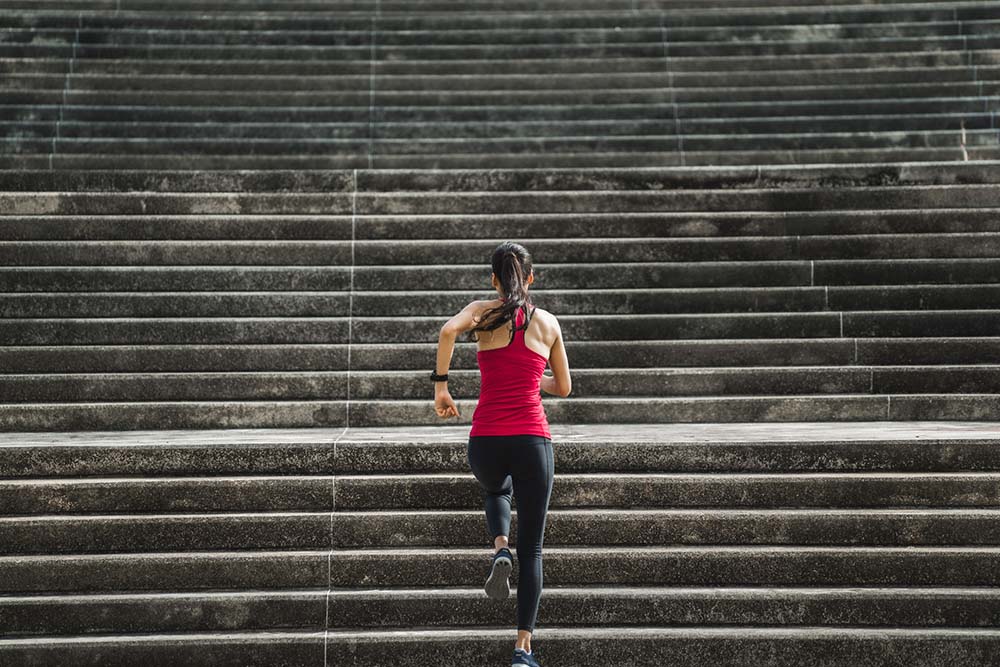The Biomechanics of Breathing During Sprinting

Sprinting is one of the most physically demanding tasks that the human body can perform. It requires an incredible amount of explosive power, tissue resilience, and motor coordination, in conjunction with a vast body of speed and endurance.
But what many people fail to consider is the importance of breathing.
Yep, believe it or not, the way in which you breathe during sprinting can impact your sprint performance.
The breathing basics while sprinting
 Implementing proper breathing mechanics during sprinting can have a huge impact on your performance. When you breathe deep into your lungs, you start to use your deep inspiratory muscles to draw air in and out of your lungs.
Implementing proper breathing mechanics during sprinting can have a huge impact on your performance. When you breathe deep into your lungs, you start to use your deep inspiratory muscles to draw air in and out of your lungs.
And this is super important.
See, this deep inspiration causes your thorax and ribcage to expand. This places your thoracic spine in a much more advantageous position, where is better able to rotate freely every single step.
So, why does this matter?
Well, during sprinting, your thoracic spine needs to be able to rotate from side to side completely uninhibited. This allows you to efficiently transfer the energy from your aggressive arm strides, through your torso, and into your legs – all of which leads to a greater power output.
And the result?
Faster sprinting speeds.
The key is to breathe deeply through your mouth, and time your breathing in accordance with your running distance – which lead us to our next point quite nicely.
The proper way to breathe while sprinting
What about how to control breathing while running? Or rather, how to breathe when sprinting?
Well, it is commonly accepted that different paced runs require different breathing techniques. And this is largely dictated by the number of steps that you take per second during that run (Bernasconi, 1995).
With this in mind, sprinting is thought to require a breathing technique of 2:2, where you actively breathe in for 2 steps and then proceed to breathe out for the following 2 steps.
However, as your distance increases, your speed changes – and therefore so should your breathing.
Higher speed middle distance races (400 to 3000 metres) would still be encouraged to use a higher breathing rate of 2:2. But, longer duration runs would be better spent using slower breathing rates, such as 3:3 or 4:4.
While it may not seem like a significant change, I can assure you that taking the time to establish a controlled rhythm of mouth breathing during your sprints will make a marked difference in your performance!
Key signs that you are breathing efficiently
So how do you know that you are breathing efficiently? Well, there are a couple of key cues that you can look for that will give you some clear insight into whether you are breathing efficiently, or not.
It is these key points which indicate proper sprint breathing:
- Should be taking deep breaths using your mouth (not your nose)
- Your stomach should be expanding each breath
- It should feel as if your ribcage is moving freely each stride
- You are not becoming faint headed
- Each of your breaths are occurring rhythmically in accordance to your steps
If you feel like these are being achieved, then you can be fairly certain that your sprinting breathing technique is on point.
A note on training at altitude
 While I could write an entire article on altitude training alone, it would be negligent of me to talk about breathing and not touch on altitude – because really, they do go hand in hand (Flaherty, 2016).
While I could write an entire article on altitude training alone, it would be negligent of me to talk about breathing and not touch on altitude – because really, they do go hand in hand (Flaherty, 2016).
Altitude training is based upon the fact that the partial pressure exerted by the oxygen in the air on your blood decreases directly with ascent above sea level, due to a gradual reduction in barometric pressure. This causes an associated decline in haemoglobin-oxygen saturation, which reduces the total oxygen content of your blood significantly.
In short, higher altitudes make it more challenging for your body to take in and use oxygen to produce energy – and your body is then forced to adapt accordingly.
As a result, training at altitude can cause vast improvements in your ability to draw oxygen from the air, as well as your ability to carry that oxygen around your body in your blood. There is also evidence to suggest that your body can become more efficient at using that oxygen to produce energy.
Consequently, when returning to sea level, aerobic endurance performance is improved in a very big way.
With this, you might be wondering how altitude affects breathing. And it can certainly have an effect. It is common for people training at altitude to feel breathless, despite exercising at relatively low intensities. They can also find themselves feeling restricted through their chest, and even short of breath long after exercise has finished.
The key is to focus on keeping your breathing as normal as possible, despite feeling uncomfortable. So, if you are training at altitude, simply use the same tips outlined above, and you cannot go wrong.
The best breathing exercises
Now, considering the importance of breathing in athleticism, it should come as no surprise that there is some evidence to suggest that you can use breathing exercises to cause an improvement in your performance.
Which is amazing if you think about it!
Breathing exercises while running
When it comes to implementing running-based breathing exercises, the research is actually pretty scarce. This doesn’t mean that there is nothing you can do to improve your breathing performance while running, but rather that you simply need to focus on improving your breathing technique.
And this is done by following the tips outlined above perfectly.
So, every time you are running – irrespective of whether it is sprint training or endurance work – make sure that you place a premium on your breathing.
Make sure that you are using your mouth every single breath and that you are breathing deep into your stomach (rather than shallow, and into your chest). Time your breathing with your steps and keep a constant rhythm.
Importantly, every time you find yourself deviating from these key points, reset and return your focus. It is this repetition that reinforces good breathing technique, and therefore maximizes your performance.
Breathing exercises while not running
 Interestingly, when it comes to breathing for the athlete, most of research sits around the use of breathing exercises performed outside of exercising conditions, when you are at rest. Commonly known as respiratory muscle training, these types of exercises have been used for years to improve performance (HajGhanbari, 2013).
Interestingly, when it comes to breathing for the athlete, most of research sits around the use of breathing exercises performed outside of exercising conditions, when you are at rest. Commonly known as respiratory muscle training, these types of exercises have been used for years to improve performance (HajGhanbari, 2013).
This mode of training uses specially designed tools that add resistance to your breathing. In doing so, they strengthen your respiratory muscles, making it easier to breathe under exercising conditions.
One of the most effective protocols appears to be implementing 2-3 sets of 30 breaths, using a resistance that corresponds with 50-70% of your maximal expiration power, twice per day, for a minimum of 4 weeks.
Two of the best respiratory training devises on the market include the:
- The Power Breathe, and
- The Ultra Breathe
Both options offer a simple and affordable way that you can implement respiratory training into your daily routine, and reap the rewards associated.
Related Article: What is Conscious Breathing?
What is the best way to catch your breath after sprinting?
Last but not least, I wanted to touch on the best way to catch your breath after sprinting – which ultimately comes down to what is known as diaphragmatic breathing.
Diaphragmatic breathing is a type of breathing that has you taking long and slow breaths deep into your diaphragm. The type of timing you want to use with these is a 4-5 second inhalation, coupled with a 4-5 second exhalation.
This type of breathing has been shown to increase parasympathetic nervous system activity, while also enhancing blood oxygenation. As a result, it has been shown to improve recovery from exercise (Martarelli, 2011).
It is often recommended that you use this type of breathing for 1-2 minutes between your sprints during a session, and then for 20-30 minutes after your session has been completed. This breathing protocol offers a way to completely optimize recovery during, and after, exercise.
Take Home Message
Over the last few years we have seen a growing body of research demonstrating the importance of proper breathing mechanics for both exercise performance and exercise recovery. Within this, there is even the capacity to train the muscles of your respiratory system to further enhance your athletic potential.
All of which is damn incredible if you ask me.
By using the key tips outlined in this article you can unlock the power of your breath and help maximize your athleticism in the process – so make sure you let us know how it goes.
References
Bernasconi, P., et al. “Running training and co-ordination between breathing and running rhythms. During aerobic and anaerobic conditions in humans.” European journal of applied physiology and occupational physiology 70.5 (1995): 387-393.
Flaherty, Gerard, Rory O’Connor, and Niall Johnston. “Altitude training for elite endurance athletes. A review for the travel medicine practitioner.” Travel medicine and infectious disease 14.3 (2016): 200-211.
HajGhanbari, Bahareh, et al. “Effects of respiratory muscle training on performance in athletes: a systematic review with meta-analyses.” The Journal of Strength & Conditioning Research 27.6 (2013): 1643-1663.
Martarelli, Daniele, et al. “Diaphragmatic breathing reduces exercise-induced oxidative stress.” Evidence-Based Complementary and Alternative Medicine 2011 (2011).
You Might Like:

